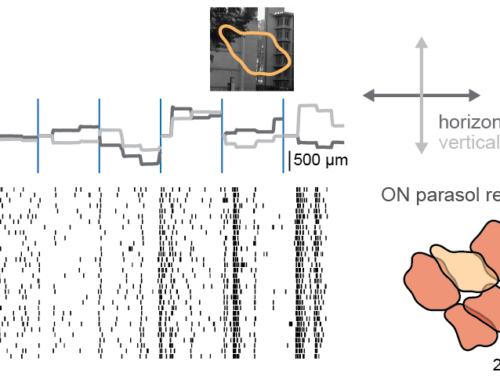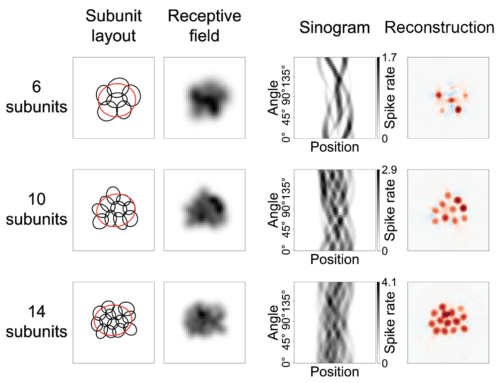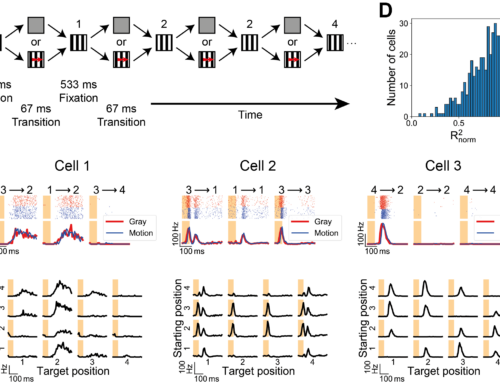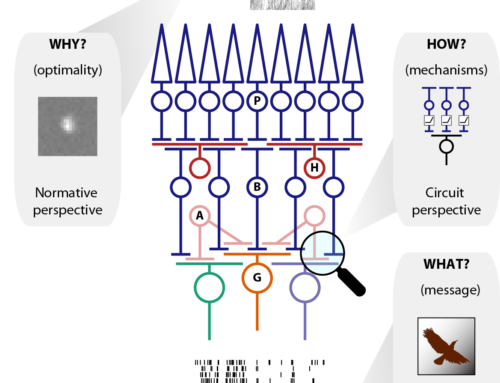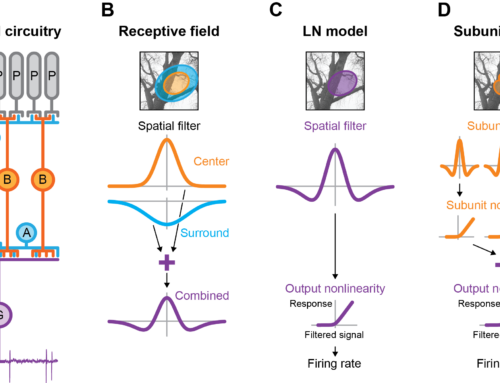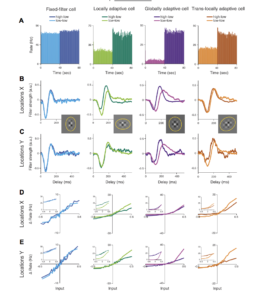
Diversity in spatial scope of contrast adaptation among mouse retinal ganglion cells.
Retinal ganglion cells adapt to changes in visual contrast by adjusting their response kinetics and sensitivity. While much work has focused on the time scales of these adaptation processes, less is known about the spatial scale of contrast adaptation. For example, do small, localized contrast changes affect a cell’s signal processing across its entire receptive field? Previous investigations have provided conflicting evidence, suggesting that contrast adaptation occurs either locally within subregions of a ganglion cell’s receptive field or globally over the receptive field in its entirety. Here, we investigated the spatial extent of contrast adaptation in ganglion cells of the isolated mouse retina through multielectrode-array recordings. We applied visual stimuli so that ganglion cell receptive fields contained regions where the average contrast level changed periodically as well as regions with constant average contrast level. This allowed us to analyze temporal stimulus integration and sensitivity separately for stimulus regions with and without contrast changes. We found that the spatial scope of contrast adaptation depends strongly on cell identity, with some ganglion cells displaying clear local adaptation, whereas others, in particular large transient ganglion cells, adapted globally to contrast changes. Thus, the spatial scope of contrast adaptation in mouse retinal ganglion cells appears to be cell-type specific. This could reflect differences in mechanisms of contrast adaptation and may contribute to the functional diversity of different ganglion cell types.
NEW & NOTEWORTHY
Understanding whether adaptation of a neuron in a sensory system can occur locally inside the receptive field or whether it always globally affects the entire receptive field is important for understanding how the neuron processes complex sensory stimuli. For mouse retinal ganglion cells, we here show that both local and global contrast adaptation exist and that this diversity in spatial scope can contribute to the functional diversity of retinal ganglion cell types.
